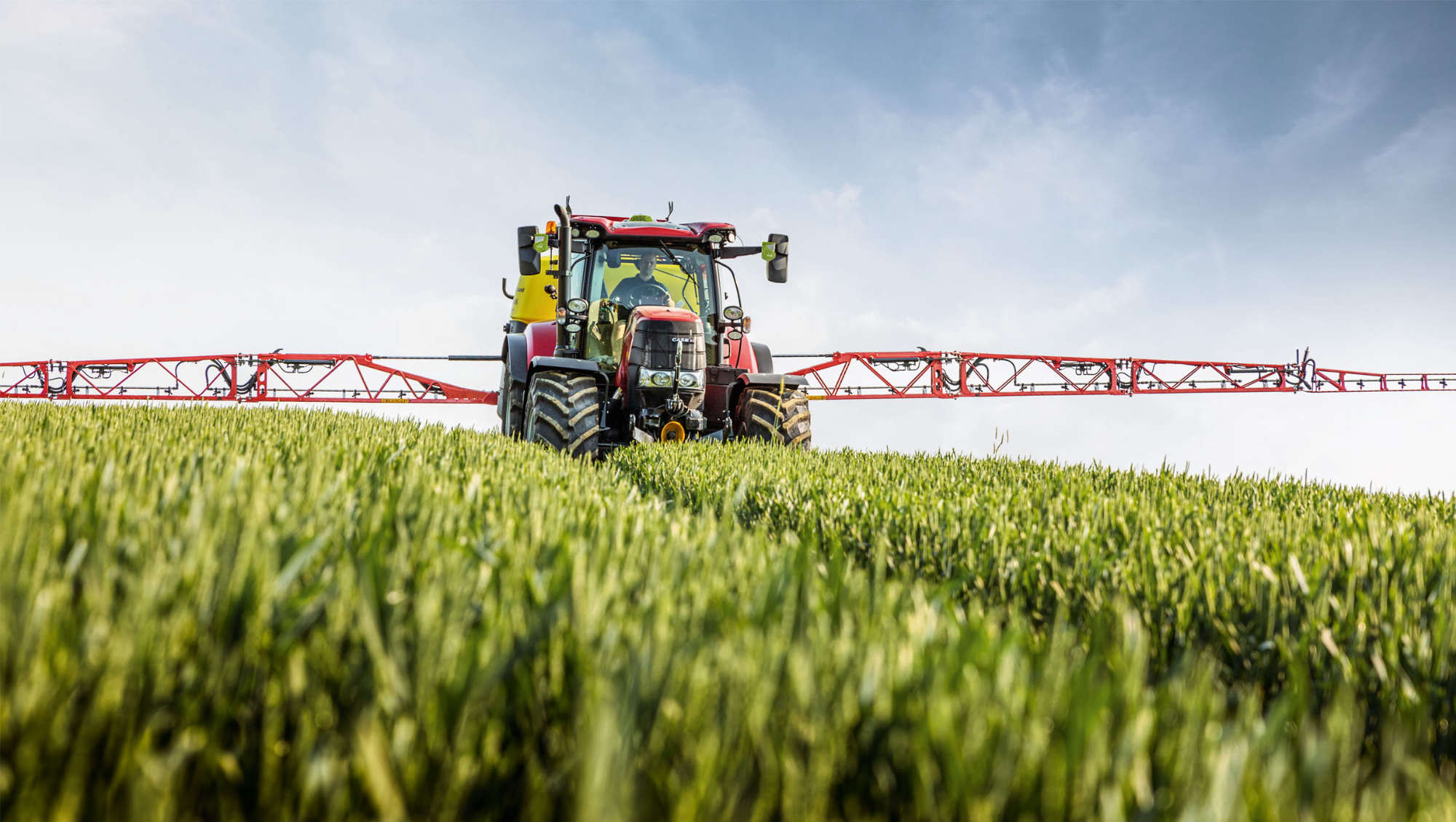FarmBlick views agriculture as a holistic system in which every process, from soil to harvest, plays a vital role. The company’s mission is to empower farmers by combining digital innovation with practical experience to create more efficient, sustainable, and profitable farms.
With a strong focus on increasing soil fertility and optimizing workflows, FarmBlick helps farmers make the best possible use of their labor, machinery, and resources. Through data-driven insights and expert consultation, the company identifies challenges, analyzes root causes, and provides tailored recommendations that enhance both productivity and profitability.
FarmBlick accompanies farmers step by step on their journey toward digital transformation—bridging the gap between traditional agricultural expertise and modern technology to ensure long-term success in a rapidly evolving industry.
A brief description of the company and its activities.
FarmBlick was founded in 2017 by Managing Director Oliver Martin. Our mission is to support farmers in managing their land efficiently, sustainably, and based on data, using smart tools. To achieve this, FarmBlick provides a range of hardware and software solutions, along with consulting and related services.
What are the main areas of activity of the company?
FarmBlick is built on four pillars.
The first pillar is consulting for farms in connection with site-specific management. In practice, this means first assessing what equipment and technical capabilities are already available and how they can be used more efficiently. Then, work typically begins with a soil inventory of the fields. Using a soil scanner, the fields are initially surveyed to identify soil type distribution, relative water retention capacity, and potential soil compaction. Based on this data, highly representative soil samples are taken and analyzed in our partner lab, Solitio. With these results, the farm develops its plan for the coming years, supported by FarmBlick.
The second pillar of FarmBlick is services. These include soil scanning and sampling, as well as workshops, training sessions, and lectures. Many of these services are complemented by FarmBlick system partners who expand the portfolio—for example, the ProFlura field management system, agricultural services (sampling, soil scanning, consulting, and more), drone services, agricultural technology, and analytics.
The third pillar—and the heart of FarmBlick—is the software we offer: the FarmBlick Community. Through the Community, farms can be set up easily and intuitively, and application maps for various uses (e.g., seeding or fertilization) can be created. Various monitoring functions help support farm managers’ knowledge and daily experience with solid data. Machine-generated data can be imported in all common formats (including Agrirouter and John Deere Operation Center), and all data—along with created measures such as application maps or tramlines—can also be exported.
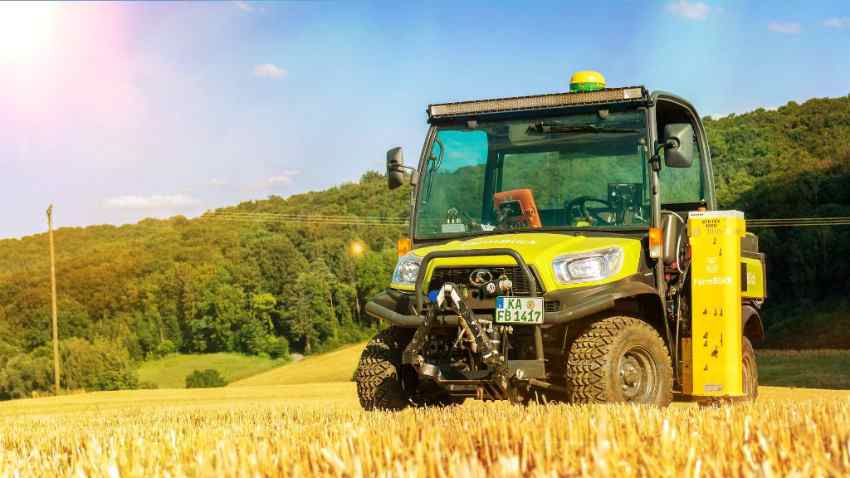
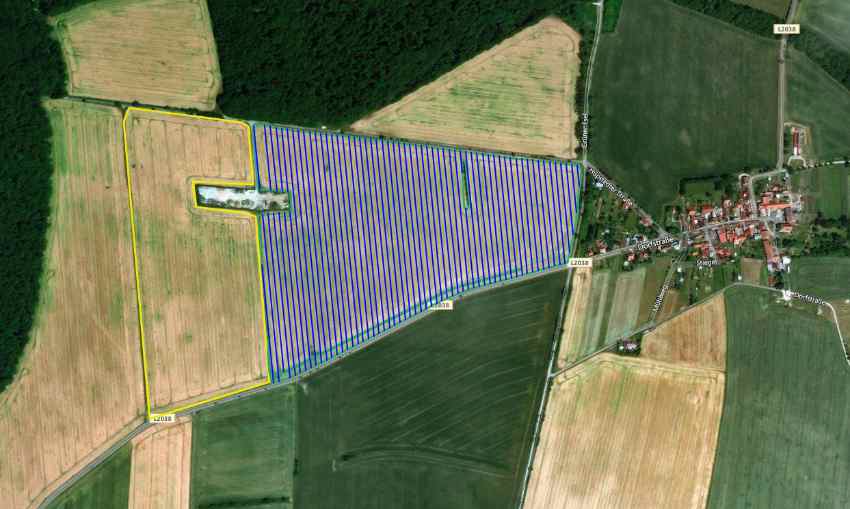
But the Community is not just about smart data processing; it is a living network of farmers, experts, and system partners. By sharing experiences and knowledge, everyone benefits from collective insights.
Key features of the Community include:
- Digital soil inventory
- Yield potential maps
- Application maps for machine control
- Satellite and sensor data integration
- Corn module
- Tramline planning
- Data management & history
- Networking & knowledge transfer
The fourth pillar is the technical component. In summer 2025, FarmBlick acquired the ISARIA brand. ISARIA offers plant sensors for precise assessment of crop conditions in the field. While driving through the field with a tractor, these sensors measure chlorophyll content and plant biomass, providing real-time information on nutrient needs. This enables site-specific fertilization, applied exactly where the plants need it. This saves fertilizer, protects the environment, and ensures more uniform crop stands. Available products include the active ISARIA ProActive and the passive ISARIA ProCompact sensors.
What’s the news about new products/services?
Recently, we integrated a soil sampling module into the FarmBlick Community. This allows sampletakers to quickly and easily plan their soil sampling based on field boundaries, previously known (georeferenced) sampling points, or by using satellite data. Through collaboration with our partner lab, Solitio, analysis results are directly fed back into the Community, enabling farms to immediately utilize the data in their planning. A unique feature of the FieldScout Pro software used by sampletakers in the field is that multiple sampling orders can be started simultaneously. Thanks to GPS tracking, the system automatically detects which field the sampler is currently in and assigns the collected sample to the correct farmer in the background. This allows adjacent fields to be sampled time-efficiently and with maximum effectiveness, without pausing, canceling, or bypassing orders. Route planning is also included, eliminating the need for a second navigation system to the field. Once the sampling task is completed, sample points and barcodes are automatically uploaded back into the Community.
Also new is the SRC module, which will be integrated into the Community in mid-November 2025. The SRC module (Smart Relay Cropping) is a new tool FarmBlick is developing for the intelligent, fully automated calculation of optimal tramlines and field boundaries. It uses a graph-based approach, representing the field as a network of nodes and edges. Based on topographic, soil-related, and operational data—such as terrain models, soil scans, and management maps—the most efficient tramlines are determined. All steps of this process, from data analysis to tramline planning, run fully automatically and are accessible via a REST API. This allows seamless integration into the FarmBlick Community or other farm management systems.
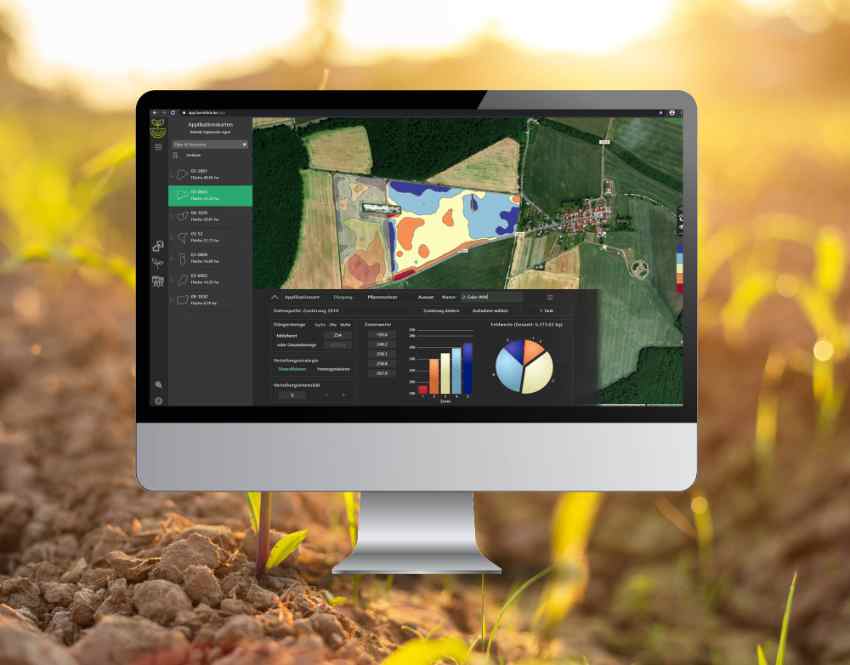
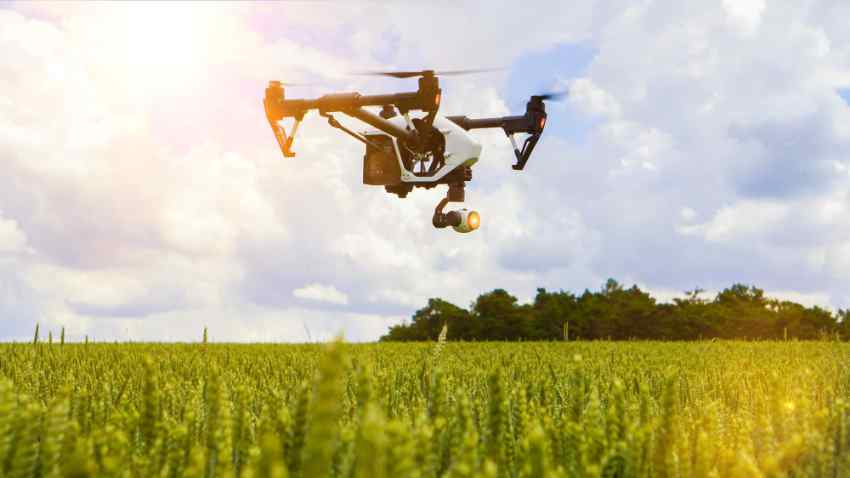
The goal is practical, resource-efficient, and cost-effective field optimization that farmers can access without extra effort. The SRC module makes complex calculations usable to generate realistic, turn-friendly, and economical tramlines—a further step toward automated, smart land management.
At Agritechnica 2025, we will also announce further forward-looking partnerships:
One key partnership is with RAUCH and their application XactMap—a joint development by RAUCH and FarmBlick. This application enables the automated creation and transfer of application maps via the RAUCH app directly to the tractor’s ISOBUS terminal. This allows site-specific fertilization strategies to be implemented quickly and easily without external data carriers. XactMap combines mechanical precision with digital intelligence: RAUCH brings expertise in precise fertilizer application, while FarmBlick provides the data and cloud architecture enabling a fully digital process chain. Through standardized interfaces to Agrirouter and MyJohnDeere, XactMap integrates seamlessly into existing farm data structures. Application maps are created, adjusted, and synchronized online directly in the field—no USB sticks or additional hardware required. The functions are accessible directly from the tractor cab via the RAUCH app, simplifying workflows, increasing process reliability, and easing documentation.
Another important step is the strategic cooperation with Pessl Instruments. In the future, METOS® IoT sensor data will flow directly into the FarmBlick Community. The goal is to unify weather, soil, and plant data on a single platform—no software hopping, no data silos, but maximum clarity and practical benefit. Weather stations and sensor data from Metos by Pessl Instruments will be linked with operational data within the FarmBlick Community: soil scans, soil samples, yields, tramlines, and application maps will all be visible on one map, dashboard, and login. This creates a comprehensive, practical system that interprets data in context—from soil moisture and weather trends to the appropriate measures for each field.
Pessl Instruments contributes decades of experience in field sensors, data models, and precise weather forecasting, while FarmBlick brings strengths in practical visualization, interface expertise, and close integration with real farming processes. Together, both partners create a system where data and decisions seamlessly interlock—a true milestone for smart farming.
Currently, technical alignments and concept developments are underway. A prototype is planned for next year, and initial pilot farms will test the solution in daily practice. Planned features include automatic alerts for drought or disease pressure, intelligent map creation from sensor data, as well as connected forecasting models and trafficability analyses.
FarmBlick stands for continuous innovation and practical digitalization. Through ongoing development of our community, integration of smart tools like the SRC module, and collaboration with strong partners such as RAUCH and Pessl Instruments, digital systems and agricultural technology merge into a practical, interoperable solution that significantly eases farmers’ daily work. The combination of ISARIA sensor technology, XactMap, and integration of METOS® data creates a holistic digital system for precision agriculture—efficient, forward-looking, and always practical. True to FarmBlick’s motto: smart & easy.
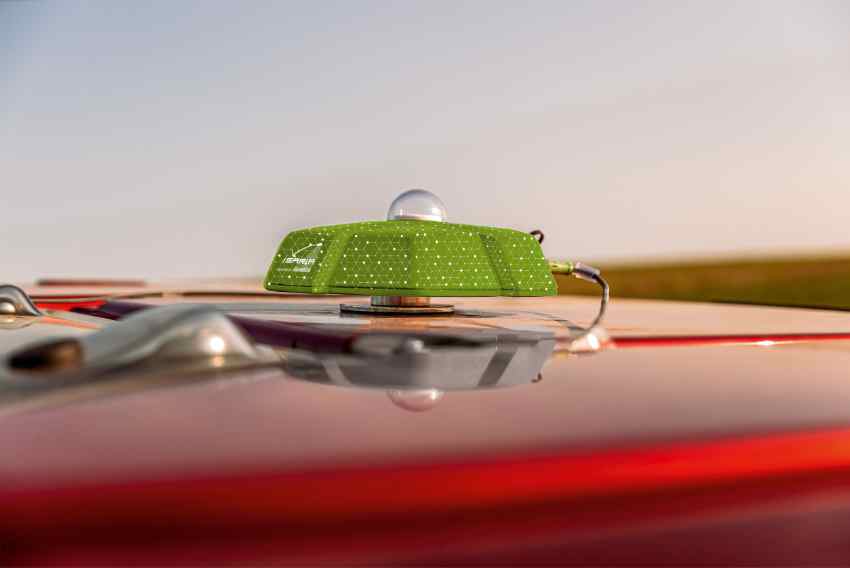
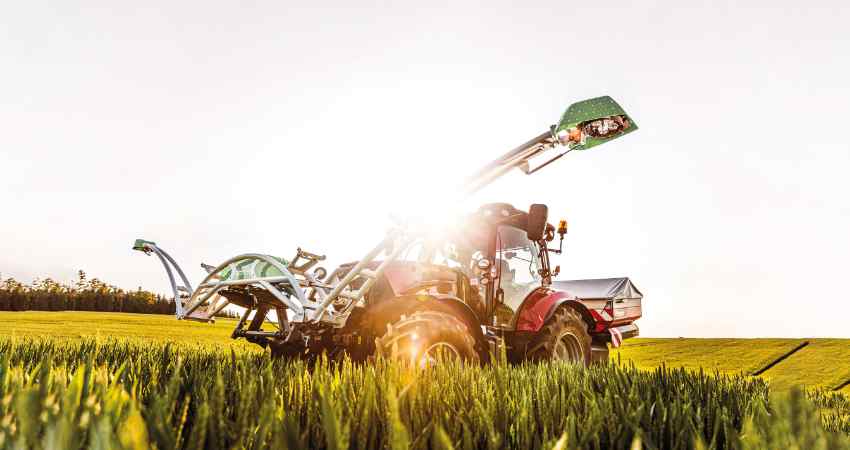
What are the ranges of products/services?
Farm consulting
Delivery and facilitation of services
Software:
- Digital modules for various crops (e.g., corn, cereals, grassland)
- Tools for field management, nutrient planning, and documentation
- Mapping and analysis services for satellite and operational data
- A community platform for knowledge exchange, training, and collaboration
- Interfaces to partner solutions in precision farming
Technology:
- ISARIA ProActive
- ISARIA ProCompact
What is the state of the market where you are currently active?
The market for digital solutions in agriculture has developed significantly in recent years but is still undergoing a transformation. More and more farms are recognizing the added value of digital technologies to use inputs more efficiently, secure yields, and more easily meet regulatory requirements. However, there are still major differences in digital maturity—both between regions and between different types of farm operations.
Farmers face the opportunity to benefit from the wide range of digital solutions and increasing mechanization, but they also need to navigate the abundance of providers and technical options. Getting started is not always easy, especially since it requires learning new skills and adapting workflows on top of already limited time. While larger farms already use extensive systems for data management and precision farming, many small and medium-sized farms are still at the beginning of this journey.
At the same time, awareness is growing that digital applications do not only serve to increase efficiency but also make an important contribution to sustainability—through targeted fertilization, optimized crop protection, and better documentation of measures, for example.
Competition in this market segment is increasing, yet many providers lack practical relevance and interoperability. FarmBlick therefore consciously positions itself as an independent, user-oriented partner that integrates various data sources and puts the farmer at the center. With our open platform, we create a connection between technology, consulting, and agricultural practice—and that is exactly where our strength lies.


What can you tell us about market trends?
The digital agriculture market is currently undergoing a phase of dynamic change. More and more farms are recognizing that precise data collection and analysis are crucial for operating both economically and ecologically sustainably. A clear trend is the increased networking of data sources—from field sensors and machine data to weather information and soil maps.
At the same time, topics such as sustainability management, CO₂ accounting, and resource efficiency are gaining significant importance. Farms will increasingly need to demonstrate how they use fertilizers, crop protection products, and energy. Digital systems like FarmBlick are therefore becoming indispensable tools to meet these requirements while simultaneously boosting productivity.
Another trend is the automation of decision-making processes: systems analyze data in real time and provide concrete recommendations—such as fertilization rates or management intensity. This development is driving a new generation of smart farming solutions that simplify work, reduce risks, and increase transparency.
FarmBlick sees great opportunities here, as our modular platform with open interfaces provides the ideal foundation to integrate these trends practically into everyday farming.
What are the most innovative products/services marketed?
FarmBlick’s key innovations lie in the intelligent networking of data and people. Our platform collects data from diverse sources—such as soil analyses, satellite imagery, machine data, and plant sensors—and transforms it into practical, actionable insights. This connectivity enables precise, site-specific management and efficient use of inputs, enhancing both profitability and sustainability.
Another core area of innovation is the FarmBlick Community: a space where farmers, advisors, and system partners come together to exchange knowledge, share best practices, and learn from one another. By combining technological networking with social interaction, an ecosystem emerges in which farms can not only make the most of their own data but also benefit from the experience of others.
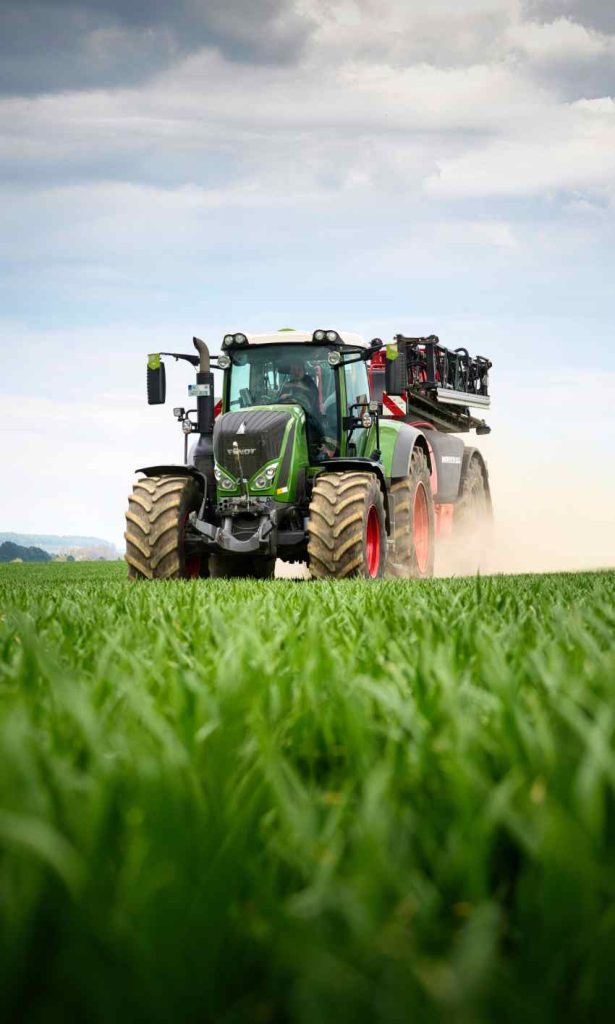
Particularly innovative are our open interfaces to partner solutions. These allow seamless data flow between different systems, enable advisors to access up-to-date information, and support data-driven decision-making on the farm. The integration of smart data use with an active community makes FarmBlick unique and opens up entirely new opportunities for farmers to operate efficiently and sustainably.
What estimations do you have for the end of 2025?
By the end of 2025, FarmBlick anticipates significant growth both in the adoption of our digital modules and in the connectivity within the agricultural sector. Increasingly, farms will recognize the benefits of site-specific management, data-driven fertilization, and smart decision support, integrating our platform into their daily operations.
Moreover, we expect wider adoption of our Community platform, through which farmers, advisors, and system partners will collaborate even more closely. The exchange of knowledge, experience, and best practices will continue to grow, taking agricultural networking to a new level.
On the technology side, we will continue to expand our modules: the integration of sensor data, satellite imagery, machine data, and weather information will become even more efficient, enabling decisions based on a comprehensive and up-to-date data landscape. At the same time, we are committed to open interfaces to seamlessly incorporate partner solutions and external data sources.
Strategically, we plan to position FarmBlick as the central digital contact for smart farming, covering both the technical infrastructure and the community aspect.
Our goal is to support farmers in increasing efficiency, conserving resources, and managing their operations sustainably—thereby creating measurable added value for agriculture in Germany and beyond.


